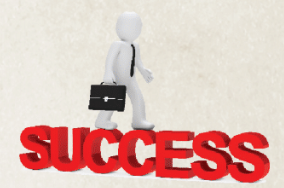INVENTORS FOCUS ON HEALTH AND ENVIRONMENT
Owen Baser is at an age when most people are enjoying retirement . Unlike most of the other people at his age, which is 75, Baser is just getting started in his career as an inventor. He’s selling what he says is the first new type of door handle in more than 200 years. He designed a door handle for people with physical difficulties. Baser and other inventors have started making improvements to medical and safety equipment. Most people look at everyday objects and accept them as they are. However, inventors tend to be less accepting. They never give up and they try to create something new. Kim Berton is one of many inventors. She is actually a pastry chef. She became an inventor after one of her two daughters nearly died because a syringe broke as she was hurrying to prepare a diabetes drug for injection. Her solution? Invent a needle that would make it easier to quickly mix a diabetes drug. She and her fellow inventors have heard from nurses that the new syringe would be useful for other types of medication, too. Christine Ingemi, a 39-year-old mother of four, was worried about her children listening to music too loudly on their iPods. That’s why she created the iHearSafe earbuds. The earbuds keep music from playing too loudly. It is not easy to create and make a penny from new inventions. Why not? Inventors often spend years planning, testing, and improving their creations. Then, they must apply for a patent from the government. A patent gives only the inventor the right to sell the new product but it sometimes takes years to get the patent for their products. After getting the patent, inventors have to find a way to make a large number of their product to sell. Once enough has been made, the inventor must sell the product to businesses or other people. “To be a successful inventor—the skill and knowledge base is not most important,” said Jeffrey Dollinger, chief development officer of the National Inventors Hall of Fame Foundation. Dollinger went on to say that inventors must have drive . “Inventors may not make big money in the business world, but they should at least try.” Not giving up can pay off , says Patricia Boswell. In the 1990s, Boswell created an environmentally-friendly detergent, safe for people with allergies to perfume. Boswell believed in her creation, but she had little money for marketing. Boswell did not give up. Today, 12 years later, her trademarked product is sold at shops in Chicago and on the East Coast including some Wal-Mart shops. “If you stay focused, it will happen,” Boswell told other inventors. “Take baby steps.''

